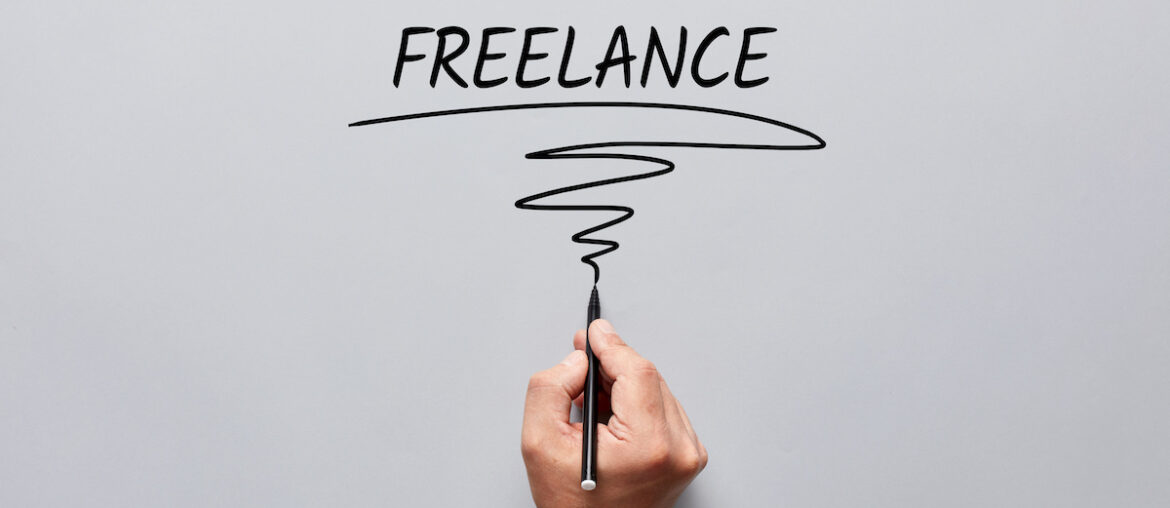Copywriter, Digital Asset Manager, Business Analyst
One employment trend that doesn’t seem to get discussed enough is the extent to which people have moved into freelancing in recent years. In 2020, the US had 59 million people who were self-employed, which was up from 53 million in 2014.
What is a freelancer? Well I am happy you asked.
A freelancer is someone who isn’t employed by a company, but is instead entirely independent of traditional employment structures. However, it’s important to understand that freelancing is a job. It’s a job in which you’re responsible for everything from beginning to end. You still have bills to pay so of course you are still working for payment. It’s just that now your income has the potential to fluctuate, and it’s your job to keep it steady.
Let’s take a quick look at some of the things you should bear in mind.
Times are Changing
The past couple of years have been a slice of hell for us all. For some, working remotely has been a revelation. Escaping the noise and business of the office has been an unexpected blessing, and now many people don’t want to go back. So, the call to head back to the office has seen people bail.
Also, some people have found that they like being their own manager. The have complete control over everything, and they can make changes without getting approval from nine circles of management.
And there can be many more reasons to consider such as:
- Disability
- Parenthood
- Rediscovering something you love doing
- Unemployment
One last thing that is playing a role is the current times we live in. Many people across the world have had their careers brought to an unceremonious end by job cuts, so they have turned to freelancing and remote work to help pay the bills.
Because there are so many reasons one may be seeking a freelance career, understanding your ‘why’ could help the transition become so much easier. For example, if you’ve lost your job, maybe you just want to pay some bills in the meantime. Knowing your purpose will help you focus your time. You could put two-thirds of your time into job hunting and one-third into freelancing.
It also suggests that you should minimize freelancing expenses because you won’t be doing it permanently. For example, if you’re only going to be freelancing as a content writer on a short-term basis, then you probably don’t need to be buying a year-long subscription to Office 365.
How to become a freelancer
Here are some of the challenges you’ll have to address along with some tips around sourcing work, building a career, and more.
Sourcing work
The first thing to think about is: What are your existing skills, and in which field(s) do you have the most experience? If you can just transfer all your skills and experience to the freelance market, then that’s going to be the lowest friction approach.
That said, if you’re desperate to make a real change, then see how you can leverage past experience to get there. For example, if you want to work as a writer, but you’ve only ever worked in IT, explore what opportunities there are to write technical manuals or analysis pieces. As you progress, you’ll build writing experience that could enable you to move into more general writing.
Another thing to think about as a freelancer is where you will most likely source freelance jobs. As mentioned, this is a job for which you’re now ultimately responsible in every respect.
So, where do people in your freelance field source work? Are there any platforms for online jobs that keep coming up in discussions, such as Upwork or Fiverr? If so, that’s a tell. Can you hit up any contacts from LinkedIn- maybe people that you’ve worked with? Reach out to your network to see if they’ve heard of any available freelance jobs.
Building a profile
You need to build a profile in the places where you’re most likely to source work. Rather than taking a scattergun approach by offering to do everything, focus your efforts on a handful of things based on capability, experience and interest. Have examples of past work or testimonies or references ready to go. If you can provide a work sample or link to previous work or point to recommendations on your LinkedIn profile, then that’s going to make it much easier for people to hire you.
Also, do you have a good headshot? Maybe something from your last job would do the trick. If not, wear your best shirt, stand against a clean plain background like a white door, and take a selfie. Put a face to those skills.
Don’t Buy all the Tools
If you’re just starting as a freelancer, you don’t need to fanciest laptop or the latest version of the software (so long as it’s compatible). You need to be functional. Yes, if you’re a designer, you might need Adobe Creative Cloud. Otherwise, try to minimize your costs until your career begins to take off. As the old saying goes, ‘A penny saved is a penny earned’.
Set a Price
Unless you already have an almighty reputation in your field, you may have to price yourself cheaply when you start out to attract work. Yes, it’s frustrating and frankly feels like you’re being exploited. However, this is a common step in establishing credibility in your field by sourcing work that you can point to. If people commonly price themselves at $25 per hour in your field, try pricing yourself at $15 to begin with. Once you have a record, then you can kick into the next phase by…
Raising your Rates
If your calendar is now full most of the time, then this could be the time to raise your rates. As you market yourself for new jobs, start quoting $20 – $25. As a rule, freelancers like to have regular clients to compensate for the reduced certainty of work. But not every existing client is going to want to pay.
This can feel uncomfortable, but it can also be a useful filter. Some businesses have narrow margins, so if someone refuses to pay, then think twice about giving them an exception because they’re your client, not your friend. Instead, maybe you should bring your collaboration to a graceful end, and find new clients who are willing to pay.
Administration Work
Understand what records and receipts you must keep as a freelancer, especially when it comes to taxes. You will need to know whether you have to register in some respect for tax purposes and how you’ll have to file your taxes. Also understand what the difference is between working as ‘self-employed’ and creating a business for which you’ll be the director and sole employee.
Yes, a business may offer tax advantages, but understand that it comes with a host of responsibilities. If you’re not intending to stay as a freelancer, or you want to keep things simple, then you may choose to avoid the business route. Whichever route you decide to take, you’ll need to gauge whether you need an accountant. You might shrink at the cost at end of the year, but finances and taxes are a very important thing to keep straight.
Takeaways
A quick summary of things to remember:
- Get your profile straight
- Be prepared to price down to source work but…
- Place a hard limit on work you do for free and very low rates
- Be wary of content farms that expect work at bargain basement rates
- Keep pitching for work
- Use your network
- Keep on top of necessary admin, accounting and business structure
At first, working freelance can feel fun. There’s no-one shouting at you, no-one’s being toxic, and you can set your own schedule.
But remember: you need to be as professional as a freelancer as you were in your previous career. So, present yourself properly and act with integrity.
Good luck!









